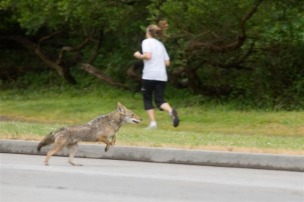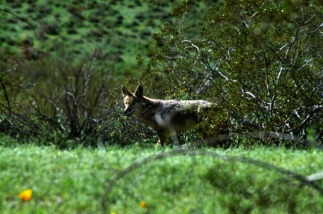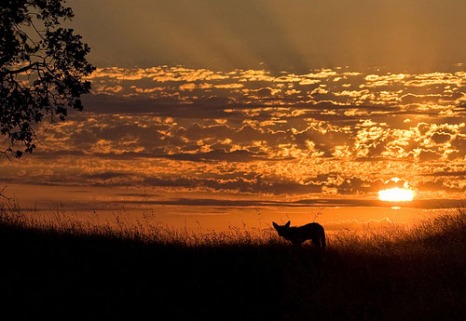Management Implications

This study supported the
initial hypothesis that higher levels of human activity would be
related to lower levels of coyote activity. The fact that there was no
significant difference between diurnal activity in urban and rural
coyotes was unexpected, however, the significant difference in
nocturnal activity raised some interesting inferences.
The
difference between nocturnal activity in natural and rural areas, was
not significantly different, suggesting that rural coyotes behave more
naturally during the nocturnal period when human activity is lowest.
There are two possible explanations for the results obtained for urban
coyotes. Urban coyotes that are more active during the diurnal period
may be classified as nuisance or problem animals, and as such would be
permanently removed from the population. Alternatively, urban coyotes
may have become habituated to human presence, and their activity
patterns have begun to level off across 24 hour periods, resulting in
an activity level pattern similar to coyotes in natural areas, but at
lower relative activity values.

From this study, managers can identify specific sites that have higher activity levels and also have a better idea of when coyotes are most active in specific site types. Education campaigns can be launched to inform the public of which areas and times of the day they are most likely to encounter a coyote. In addition, problem urban coyotes are currently dealt with in a lethal manner. It may be possible to institute aversive conditioning (eg. rubber bullets) as an alternative to lethal control in an attempt to mimic rural coyote response to exploitation. If urban coyotes come to associate humans with disturbance, they may shift to lower levels of diurnal activity, moving more towards a rural coyote relative activity curve.

The study design does
have some limitations that need to be addressed in the future. The next
step is to incorporate both coyote and human population densities into
the analysis and determine what effect they may have on activity
levels. Also, coyote activity (and likely human activity) varies across
seasons, and as such more data must be collected across all for seasons
to account for those behavioral variations.


